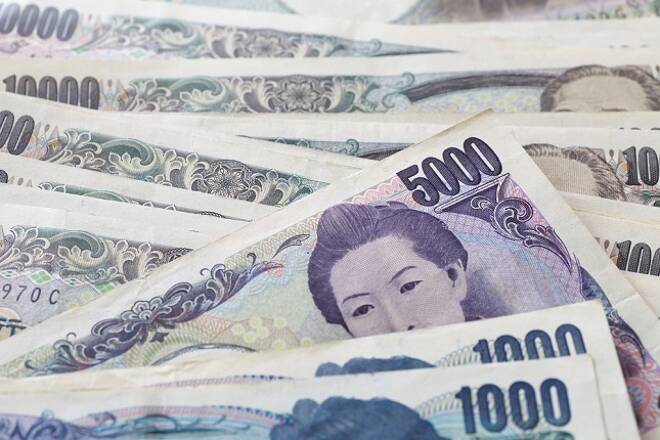Advertisement
Advertisement
USD/JPY Fundamental Daily Forecast – Keep an Eye on 3-Month/10-Year Treasury Spread
By:
Sellers have been hitting the U.S. Dollar since November 28 after Federal Reserve Chairman Jerome Powell said that U.S. interest rates were nearing neutral levels. Traders started adjusting their Dollar/Yen positions as they interpreted his remarks as signaling a slowdown in the pace of rate hikes.
The Dollar/Yen is trading higher on Wednesday, clawing back some of its losses from the previous session, when it posted its biggest one-day drop since July 20. During Tuesday’s session, the Forex pair was torched by aggressive safe-haven buying of the Japanese Yen. Although a rally in the Yen is often associated with flight-to-safety buying during times of political and financial turmoil, yesterday’s move was more of a reaction to an inverted Treasury market.
At 0818 GMT, the USD/JPY is trading 113.046, up 0.263 or +0.22%.
An inversion in part of the Treasury yield curve raises concerns about a potential slowdown in the U.S. economy. Nervous investors were drawn into the Japanese yen over an inversion of the yield curve between three-year and five-year U.S. Treasury notes and between two-year and five-year notes which made the U.S. Dollar a less-attractive investment.
Although the yield curve had been tightening for some time, the inversion came as a surprise since these were the first parts of the Treasury yield curve to invert since the financial crisis, excluding very short-term debt.
Treasury experts are saying that in the initial phase of the inversion of the yield curve, investors are worried about whether there’ll be a recession. The early move often leads to aggressive selling of the U.S. Dollar. Traders also tend to overreact more to weak data than to strong data during this phase of the process.
Forecast
Sellers have been hitting the U.S. Dollar since November 28 after Federal Reserve Chairman Jerome Powell said that U.S. interest rates were nearing neutral levels. Traders started adjusting their Dollar/Yen positions as they interpreted his remarks as signaling a slowdown in the pace of rate hikes.
The Treasury markets are closed on Wednesday so we may see some counter-trend trading in the USD/JPY as investors book profits after yesterday’s steep sell-off. When they return on Thursday, investors will be watching the spread between the three-month Treasury bills and 10-year Treasury notes since there is proof that an inversion between these two financial instruments precedes a recession. As of Tuesday’s close, the spread was down to 50 basis points, its tightest range in 12 years.
About the Author
James Hyerczykauthor
James Hyerczyk is a U.S. based seasoned technical analyst and educator with over 40 years of experience in market analysis and trading, specializing in chart patterns and price movement. He is the author of two books on technical analysis and has a background in both futures and stock markets.
Advertisement
